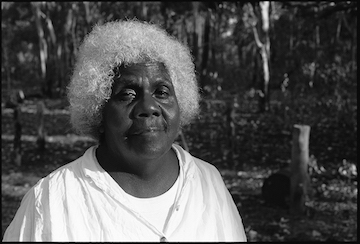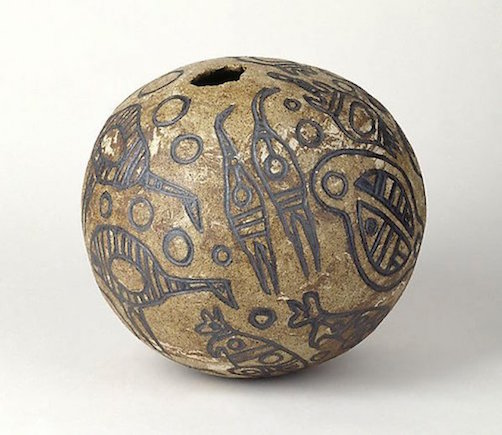Written by Elizabeth Heffernan, RAHS Volunteer
To celebrate Women’s History Month, the Royal Australian Historical Society will highlight Australian women that have contributed to our history in various and meaningful ways. You can browse the women featured on our new webpage, Women’s History Month.
Aboriginal and Torres Strait Islander people are advised that this webpage contains the images and names of people who have passed away.
Dr. Thancoupie Gloria Fletcher James of the Thanakwithi people went by her totemic name of Thancoupie or Thanakupi, meaning ‘wattle flower’, for most of her public life. She is widely credited today as the founder of the Indigenous ceramics movement in Australia.

Portrait of Thanakupi, by Kerry Trapnell. [Image courtesy of the Art Gallery of NSW]
Thancoupie started her career as a pre-school teacher, only practicing art part-time. In 1971 she made the bold decision to move interstate and attend the East Sydney Technical College, today the National Art School. After her initial struggle with using sacred clay as an artistic medium, Thancoupie studied in earnest under famous Australian ceramicist Peter Rushforth and world-renowned Japanese potter Shiga Shigeo. Upon her graduation she became the first qualified Indigenous Australian ceramicist in the country. [3]
Thancoupie found working with clay to be “strange but exciting”. [4] She developed a unique style that evolved over time, from large bowls to spherical shapes to more organic forms inspired by nature. Clay became a means by which she expressed her own personal and cultural connection to the land and its creatures. Her work was well-received and quickly gained traction within Australia’s artistic circles.

Thanakupi, Mosquito corroborree, 1994. [Image courtesy the Art Gallery of NSW, from the Mollie Gowing Acquisition Fund for Contemporary Aboriginal Art 1995]
Thancoupie maintained a strong connection to her native culture throughout her lifetime. As the last fluent speaker of Thaynakwith, she was determined to preserve it for future generations. To this end she published Thanakupi’s Guide to Language and Culture in 2007, a Thaynakwith dictionary which has since received great praise. [7] She helped found the Weipa Festival on Cape York, and as an elder ran holiday education programs for Indigenous children. [8] Thancoupie’s dedication to the preservation of her culture is seen clearly in her artwork, which encodes the Dreaming narratives imparted to her by her own elders within the clay and pigment of her ceramics.
Thancoupie was appointed a Doctor of Griffith University in 1998 for her services to Aboriginal Arts. In 2003 she received an Order of Australia award for her contributions to the Indigenous Australian and artistic communities.
Thancoupie’s artwork and achievements in history are as timeless as the clay she created with. Her belief in and dedication towards her local community is best expressed in her own words: “Everyone is art. Everybody has it.” [9] Thancoupie spent a lifetime proving those words true.
References:
[1] Paul Donnelly, ‘Thancoupie (Thanakupi) the Potter (1937-2011) – Inside the Collection’, Museum of Arts and Sciences, 16 May 2011, <https://maas.museum/inside-the-collection/2011/05/16/thancoupie-thanakupi-the-potter-1937-2011/>, accessed 26 March 2019.[2] Jennifer Isaacs, ‘Thancoupie (1937-2011)’, Jennifer Isaacs, <http://www.jenniferisaacs.com.au/thancoupie/>, accessed 26 March 2019.
[3] Donnelly, ‘Thancoupie’.
[4] ‘Gloria Fletcher Thancoupie – Artists Profile’, Cooee Art, <https://www.cooeeart.com.au/marketplace/artists/profile/ThancoupieGlori/>, accessed 26 March 2019.
[5] Ibid.
[6] Donnelly, ‘Thancoupie’.
[7] Christine Nicholls, ‘Artist kept her people’s culture and language alive’, The Sydney Morning Herald, 7 September 2011, <https://www.smh.com.au/national/artist-kept-her-peoples-culture-and-language-alive-20110906-1jvrl.html>, accessed 26 March 2019.
[8] Donnelly, ‘Thancoupie’.
[9] ‘Thanakupi – Indigenous Australian Ceramic Artist’, Ceramics and Pottery Arts and Resources, 7 April 2012, <https://www.veniceclayartists.com/tag/thancoupie/>, accessed 26 March 2019.

0 Comments